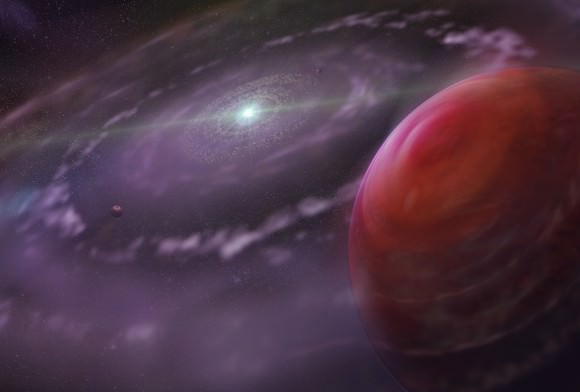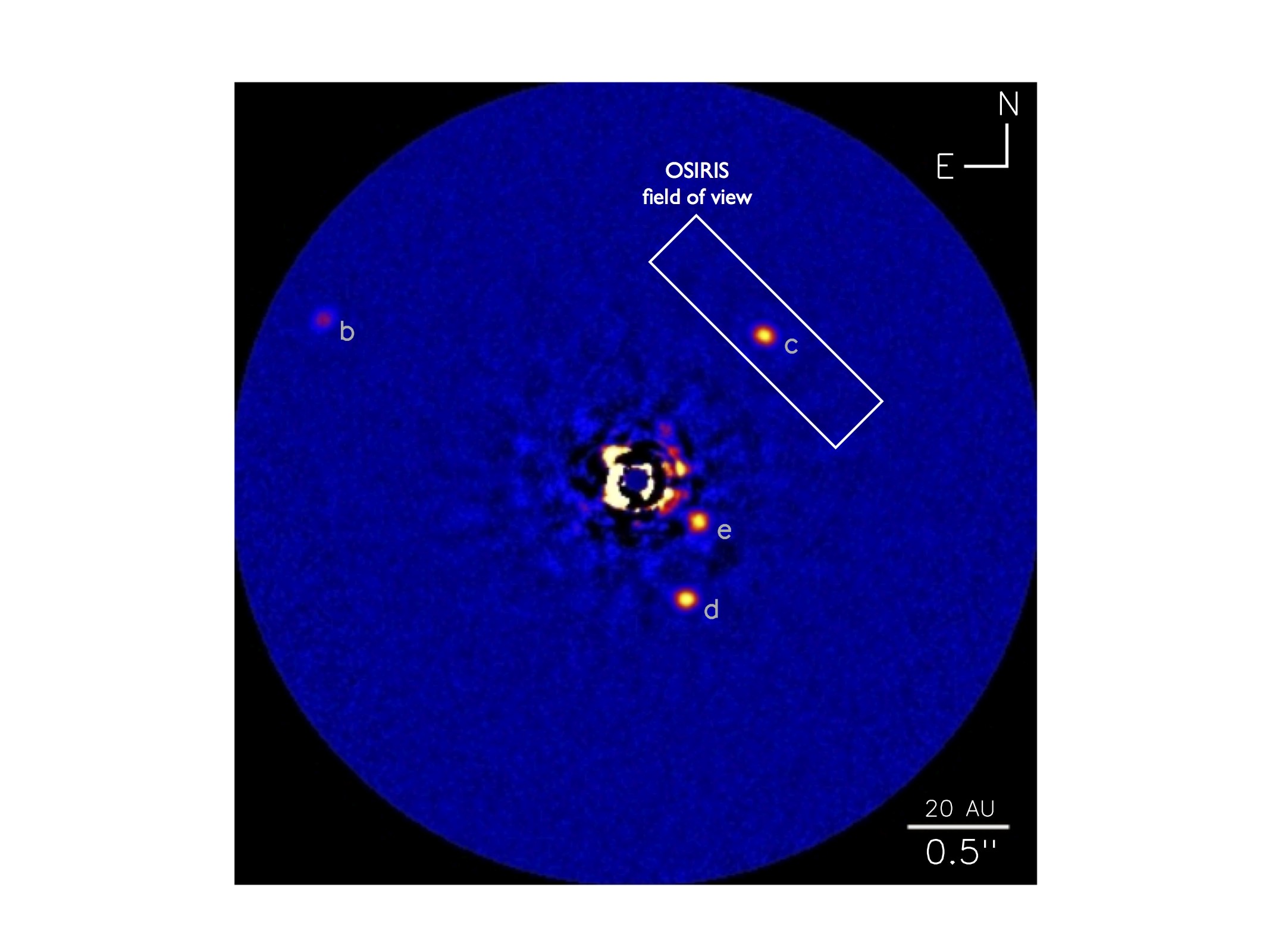The most detailed look yet at the atmosphere of a distant exoplanet has revealed a mixture of water vapor and carbon monoxide blanketing a world ten times the size of Jupiter about 130 light years away from Earth. But even with water present on this world, it is incredibly hostile to life. Like Jupiter, it has no solid surface, and it has a temperature of more than a thousand degree. Additionally, no tell-tale methane signals were detected in the atmosphere. But this solar system is still of great interest, as three other giant worlds orbit the same star and scientists said studying this system will not only help solve mysteries of how it was formed, but also how our own solar system formed as well.
The observations were made at the Keck II telescope in Hawaii, using an infrared imaging spectrograph called OSIRIS, which was able to uncover the chemical fingerprints of specific molecules.
“This is the sharpest spectrum ever obtained of an extrasolar planet,” said Dr. Bruce Macintosh, from the Lawrence Livermore National Laboratory. “This shows the power of directly imaging a planetary system. It is the exquisite resolution afforded by these new observations that has allowed us to really begin to probe planet formation.”
“With this level of detail,” said co-author Travis Barman from the Lowell Observatory, “we can compare the amount of carbon to the amount of oxygen present in the atmosphere, and this chemical mix provides clues as to how the planetary system formed.”

Credit: Dunlap Institute for Astronomy & Astrophysics
The planets around the star, known as HR 8799, weigh in between five to 10 times the mass of Jupiter and are still glowing in infrared with the heat of their formation. The research team says their observations suggest the solar system was created in a similar way to our own, with gas giants forming far away from their parent star and smaller, rocky planets closer in. However, no Earth-like rocky planets have yet been detected in this system.
“The results suggest the HR 8799 system is like a scaled-up Solar System,” said Quinn Kanopacky, an astronomer from the University of Toronto in Canada. “Once the solid cores grew large enough, their gravity quickly attracted surrounding gas to become the massive planets we see today. Since that gas had lost some of its oxygen, the planet ends up with less oxygen and less water than if it had formed through a gravitational instability.”
There are two leading models of planetary formation: core accretion and gravitational instability. When stars form, a planet-forming disk surrounds them. With core accretion, planets form gradually as solid cores slowly grow big enough to start acquiring gas from the disk, while in the gravitational instability model, planets form almost instantly as the disk collapses on itself.
Properties such as the composition of a planet’s atmosphere are clues to how the planet formed, and in this case core accretion seems to win out. Although there was evidence of water vapor, that signature is weaker than would be expected if the planet shared the composition of its parent star. Instead, the planet has a high ratio of carbon to oxygen – a fingerprint of its formation in the gaseous disk tens of millions of years ago. As the gas cooled with time, grains of water ice formed, depleting the remaining gas of oxygen. Planetary formation then began when ice and solids collected into planetary cores.
“Once the solid cores grew large enough, their gravity quickly attracted surrounding gas to become the massive planets we see today,” said Konopacky. “Since that gas had lost some of its oxygen, the planet ends up with less oxygen and less water than if it had formed through a gravitational instability.”
“Spectral information of this quality not only provides clues about the formation of the HR8799 planets but also provides the guidance we need to improve our theoretical understanding of exoplanet atmospheres and their early evolution,” said Barman. “The timing of this work could not be better as it comes on the heels of new instruments that will image dozens more exoplanets, orbiting other stars, that we can study in similar detail.”
This system was also the study as part of remote reconnaissance imaging with Project 1640. The video below explains more:
Source: Keck Observatory


If other gas giants collect earthish-size moons at the rate ours do, things are positive.
Hmm… maybe we’re detecting the water vapor from those moons around the gas giants?
H2O is always the culprit. It cannot even hide correctly. Poor ole H2O. Its a gas, a solid & a liquid. Guilty as sin. Sentencing in 3.14 trillion years. Its a pi r sqr’d thing. …lol. PEACE!